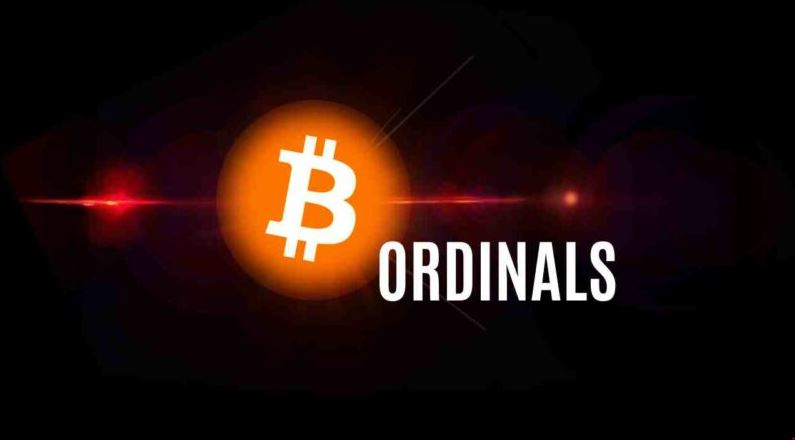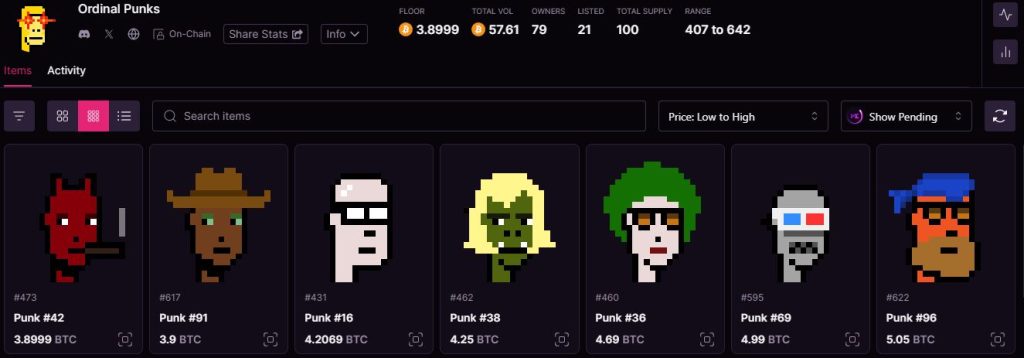Bitcoin Ordinals extends Bitcoin network’s capability by turning the smallest units of Bitcoin, known as satoshis (sats), into unique digital collectibles. This allows users to embed everything from artwork to code directly onto the Bitcoin blockchain. Ordinals offer a blend of security, decentralization, and innovation, making Bitcoin more than just a digital currency. Here we explore the ins and outs of Bitcoin Ordinals, from how they work to their differences from traditional NFTs.
What Is A Bitcoin Ordinal?
A Bitcoin Ordinal is an addition to the Bitcoin network that transforms each satoshi, the smallest unit of Bitcoin, into a distinct digital entity capable of holding unique data. One Bitcoin can be divided into 100 million satoshis. This introduces a way to “inscribe” or include various types of information, like artwork, text, or executable code, directly into a piece of satoshi.
Ordinal Theory assigns a sequential identifier to every satoshi mined since the genesis block, it’s possible to track and distinguish each transacted satoshi. This turns these sats into one-of-a-kind digital collectibles or assets, and make the Bitcoin ecosystem able to host non-fungible tokens (NFTs) natively on its blockchain. The Bitcoin mainnet Ordinals software was launched in January 2023.

While Ordinals leverage Bitcoin’s robust security, they’ve stirred controversy within the community. Critics argue they may increase transaction fees and network congestion, and raise ethical questions about their use. Despite this, Ordinals have also been praised for boosting demand for block space and attracting new interest to the Bitcoin ecosystem, showcasing the evolving debate over their place in Bitcoin’s future.
How Do Bitcoin Ordinals Work?
Bitcoin Ordinals function by assigning a unique, sequential number to every satoshi. This identification could work through the Ordinal Theory, which numbers each satoshi from the first to the most recently mined, so their movement and ownership can be tracked. This method sparked debate in the Bitcoin community, with some viewing these inscriptions as spam.
Bitcoin Ordinals’ main feature is the ability to inscribe data onto satoshis, by connecting information in the outputs of a transaction. As any other transaction, they are also immutable and inseparable. These inscriptions are simple text messages, complex images or programming code.
This inscription process utilizes the Bitcoin network’s existing transaction capabilities but in a novel way that adds value beyond mere currency transactions. This way users can create digital assets that are verifiable and transferable on the Bitcoin blockchain, without changing how Bitcoin operates. These assets benefit from the security, decentralization, and immutability.
Ordinal Inscriptions Explained
Ordinal protocol is the method through which unique data is connects to individual satoshis. As mentioned before, these data includes but not limited to text, images, and executable code. The inscription permanently associates the inscribed data with a specific satoshi, so it can’t be modified.
Inscriptions are made possible by utilizing the space in a Bitcoin transaction’s outputs. So users can include extra data that goes beyond simple value transfers. The data then recorded on the blockchain, tied to the transacted satoshi. So these satoshis keep financial value and informational or artistic value, depending on the nature of the inscription.
The process requires an understanding of Bitcoin transactions and the ability to interact with the blockchain. This process represents how Bitcoin is able to improve time by time and be more than a peer to peer transaction protocol.
Bitcoin NFTs VS Traditional NFTs
Ordinals has created a new category of digital collectibles, distinct from traditional NFTs that are on Ethereum or Solana network. The primary difference is the technology and the method how they described on their blockchain.
Traditional NFTs are created and managed through smart contracts. These define the NFT’s rules for the creation, ownership, and transfer, this way they have more functionality than just ownership tracking. So the creators can embed royalties, give ownership rights, and other features into the NFTs.
On the other hand, Bitcoin NFTs use data inscription as described above. This focuses on the uniqueness and immutability. So Bitcoin NFTs are simpler in terms of functionality but can use the network’s security protocol.
Another key difference is in the nature of the assets themselves. Traditional NFTs on platforms like Ethereum are often linked to external metadata and content hosted off-chain, meaning the NFT is essentially a pointer to where the actual content resides. While Bitcoin NFTs created through Ordinals contain the data directly in the blockchain. This makes Ordinals more censorship-resistant but also limits their size and increases costs. You can find both type of these arts on marketplaces like MagicEden.

This comparison shows that traditional NFTs offer more features but are more complex, while Bitcoin NFTs are simpler but very secure and permanent. As things change in the NFT world of the crypto community, whether someone prefers traditional NFTs or Bitcoin NFTs will depend on what they need and like. Bitcoin NFTs are a new choice for those who value the strong security and lasting nature of the Bitcoin network.




